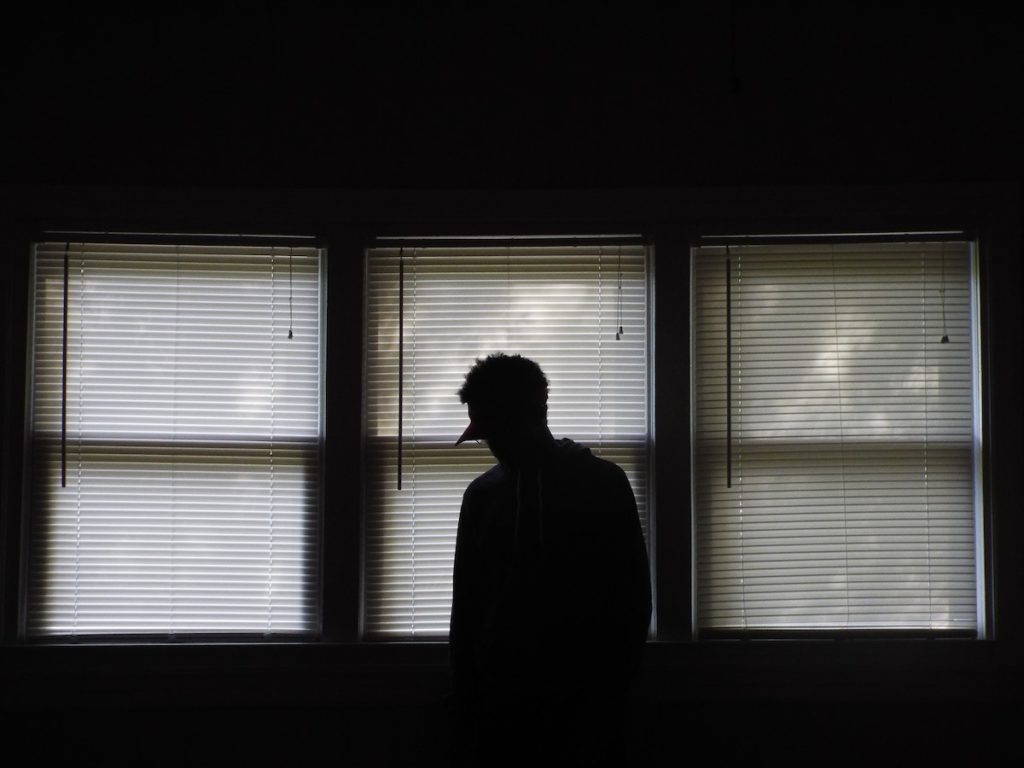
People with severe mental illness die 10-20 years younger than the general population and health inequalities are growing, not improving (Harrison & Tracy, 2017).
Living with psychosis makes social interaction difficult. Research shows that as many as 90% of people with psychosis suffer from paranoia (Moutoussis et al, 2007), have small social circles (Macdonald et al, 2000), stay single (Nyer et al, 2010) and find it hard to hold down a job (Perkins, 2002).
Staying at home, safe from the outside world, is the obvious thing to do if you feel afraid and persecuted, but of course it is this sedentary and lonely lifestyle that contributes to massively reduced life expectancy.
We know that psychological treatments can help people who are affected by paranoia, anxiety and social situations. Active coaching can help people overcome their fears and start to engage more with the outside world, but this kind of support is not available for many in today’s cash-strapped NHS.
Digital mental health interventions are touted by many enthusiasts and some commissioners as the most exciting (and potentially cost-effective) development for many years. However, the evidence for digital helping people with psychosis remains fairly thin on the ground.
A Dutch randomised controlled trial published today in The Lancet Psychiatry hopes to add to our knowledge. The authors built on our existing know how that cognitive behavioural therapy (CBT) is the most effective psychological treatment for paranoia, anxiety and social avoidance in people with psychosis. Their hypothesis was that virtual reality therapy can provide a controlled environment in which exposure-based therapeutic exercises can be worked through, with patients getting live guidance from a trained therapist.

Living with psychosis makes socialising difficult. Work, relationships and simple social interaction can be really challenging.
Methods
The authors began by searching for existing studies in this area. They found 94 peer reviewed papers and learned that exposing people with psychosis to immersive virtual environments is safe and that treatment of paranoia and anxiety is feasible. They only found one existing pilot randomised controlled trial (RCT), a small study (n=30) which found “large reductions in delusional conviction and real-world distress”.
So, buoyed by all of this, the researchers from institutions across the Netherlands set up a new RCT to investigate the effects of virtual-reality-based cognitive behavioural therapy (VR-CBT) on paranoid thoughts and social participation.
The trial involved 116 outpatients (aged 18-65 years) from 7 Dutch mental health centres. Inclusion criteria were a DSM-IV diagnosis of a psychotic disorder based on the Mini-International Neuropsychiatric Interview, the Schedules for Clinical Assessment in Neuropsychiatry or the Comprehensive Assessment of Symptoms and History (this varied by centre); avoidance of either shops, streets, public transport, or bars or restaurants; paranoid ideation in the past month (defined as a score greater than 40 on the Green et al Paranoid Thoughts Scale).
Participants were randomly assigned to:
- 16 individual one-hour therapy sessions of VR-CBT (delivered by trained therapists) (in addition to treatment as usual), or
- Waiting list control group (treatment as usual).
Assessments were done at baseline, at 3 months (when treatment was just completed), and at a 6 month follow-up visit.
The primary outcome was social participation. Secondary outcomes included momentary paranoia, perceived social threat, momentary anxiety, various functional outcomes, stigma, medication adherence and cybersickness. They analysed data using intention to treat.
Unfortunately the trial was only retrospectively registered (“because of an oversight”): ISRCTN 12929657.
Results
- Compared with the control group, VR-CBT did not increase the amount of time spent with other people after 3 months.
- Participants’ paranoia and anxiety in social situations were reduced in the VR-CBT group, compared to the control group at 3 months and at 6 months.
- VR-CBT did not reduce perceived social threat.
- The VR-CBT group also used fewer safety behaviours and had fewer social cognition problems at 3 and 6 months, which in turn led to fewer paranoid feelings.

Compared to controls, VR-CBT did not significantly increase the amount of time that people with psychosis spent socialising after completing treatment.
Conclusions
The press release contains this quote from lead author Roos Pot-Kolder:
The addition of virtual reality CBT to standard treatment reduced paranoid feelings, anxiety, and use of safety behaviours in social situations, compared with standard treatment alone. It’s important to note that all patients on this trial continued with their usual treatment, and the virtual reality CBT was administered by trained therapists.
While we did not find that this therapy increased the amount of time that participants spent with others, we are hopeful that once patients feel more comfortable in social situations and learn that other people are less threatening than anticipated, they might make and maintain social contacts, and find hobbies and jobs. However, more research will be needed before the treatment becomes widely available in the clinic.
It’s nice to be hopeful, especially when we are trying to help people who are living with such hardship, but it’s also important not to jump to conclusions and suggest that results are more encouraging than they actually are. My conclusion from all of this is that VR-CBT may help people with psychosis to reduce their paranoia and anxiety, but that much more work is needed to find out how VR can help them become more active members of society.
As Dr Kristiina Kompus from Bergen University says in her linked commentary:
It is important to establish whether the benefits that virtual reality can bring to therapy extend to complex challenges involving social cognition, such as positive and negative symptoms or social participation in patients with psychosis.

These results suggest that adding VR-CBT to standard treatment may reduce paranoia and anxiety in people with psychosis.
Strengths
- This is the first RCT that uses virtual reality CBT to try and improve social functioning and reduce paranoia in people with psychosis.
- Some of the results are encouraging and this definitely is an area that warrants further exploration. We have limited ways of helping people with severe mental illness, so there’s a huge moral imperative to act when we find a promising new way forward.
Limitations
- The primary outcome (social participation) failed. People who got the VR-CBT did not spend more time socialising after treatment.
- Some of the secondary outcomes (momentary paranoia, momentary anxiety) brought back significant results, but many of the others failed too. We therefore need to be mindful that these headline results may have been “cherry-picked”.
- This trial is likely to be underpowered. The research team “postulated an attrition rate of 20%, and thus set 160 as the total sample size”. Only 116 patients were randomised and even though they conducted an intention to treat analysis, they didn’t have data for everyone at the end. This is a small trial, so we need to interpret the results with caution.
- The participants in this trial may be self-selected, i.e. more severely ill patients or those not keen on an immersive VR experience may have said “no thank you”. So these results may be an overestimate of the true effect in real-world psychosis patients.
- Research assistants were blinded to treatment allocation, which is good, but it’s unclear from the paper whether allocation was concealed, which would have prevented selection bias.
- There were more drop-outs in the VR-CBT group (n=12) than in the control group (n=5), which could be interpreted as evidence of harm. The study looked at cybersickness as a side-effect (with only one person dropping out because of nausea), but no other adverse effects were reported.

A failed primary outcome, but some significant results on secondary outcomes. Cherry picking or encouraging findings?
Implications for practice
So what do patients think of virtual reality CBT? It’s hard to say from this trial, because the experiences of participants are not reported. You may have read the press releases from other VR studies with patient comments (e.g. “It’s an incredible experience.”), but with such novel interventions at work we surely need to not just include the patient voice at all stages, but coproduce future research with people who have lived experience of psychosis.
As ever, it would be great to see patient important outcomes included in future studies, so we can measure social engagement in a meaningful way.
So the evidence for virtual reality is building slowly and this is reflected in the commitment to the field from the National Institute of Health Research, who just last week presented a £4m cheque to Daniel Freeman and David Clark in Oxford (the first i4i Mental Health Challenge Award). This project will ensure that VR is routinely delivered in mental health services, and will also include a large multi-centre clinical trial in NHS trusts across the country to evaluate the efficacy, safety and cost-effectiveness of the VR treatment. Evidence that we will bring to you when it’s published.

NIHR is investing significantly in virtual reality. Are they backing the right horse?
Links
Primary paper
Pot-Kolder RMCA, Geraets CNW, Veling W, van Beilen M, Staring ABP, Gijsman HJ, Delespaul PAEG, van der Gaag M. (2018) Virtual-reality-based cognitive behavioural therapy versus waiting list control for paranoid ideation and social avoidance in patients with psychotic disorders: a single-blind randomised controlled trial. Lancet Psychiatry Published Online February 8, 2018 http://dx.doi.org/10.1016/ S2215-0366(18)30053-1
Other references
Harrison J, Tracy D. (2017) People with severe mental illness die younger and things are getting worse. The Mental Elf, 1 Sep 2017.
Moutoussis M, Williams J, Dayan P, Bentall RP. (2007) Persecutory delusions and the conditioned avoidance paradigm: towards an integration of the psychology and biology of paranoia. Cogn Neuropsychiatry 2007; 12: 495–510.
Macdonald EM, Hayes RL, Baglioni AJ Jr. (2000) The quantity and quality of the social networks of young people with early psychosis compared with closely matched controls. Schizophr Res 2000; 46: 25–30.
Nyer M, Kasckow J, Fellows I, et al. (2010) The relationship of marital status and clinical characteristics in middle-aged and older patients with schizophrenia and depressive symptoms. Ann Clin Psychiatry 2010; 22: 172–79.
Perkins R. (2002) Unemployment rates among patients with long-term mental health problems: a decade of rising unemployment. Psychiatr Bull 2002; 26: 295–98.
Freeman D, Bradley J, Antley A. et al (2016) Virtual reality in the treatment of persecutory delusions: randomised controlled experimental study testing how to reduce delusional conviction. British Journal of Psychiatry 2016 1-6 doi: 10.1192/bjp.bp.115.176438.
Freeman D. (2018) Virtual benefits for the real world. NIHR blog, 1 Feb 2018.
Photo credits
- Photo by Iz zy on Unsplash
- Photo by Samantha Gades on Unsplash
- Photo by Scott Webb on Unsplash
- Photo by Rodion Kutsaev on Unsplash
- Photo by Åsmund Gimre on Unsplash
